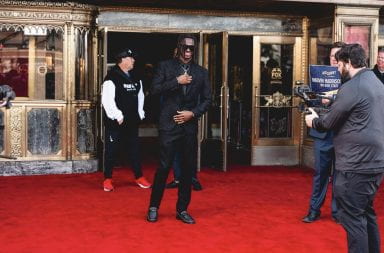The Lantern will have daily profiles of comics this week who will be at Wizard World Ohio Comic Con, which is slated to be held Sept. 28-30 at the Greater Columbus Convention Center.
Comic book artist Greg Horn didn’t get his dream job, but that hasn’t stopped his success.
“If I had gotten what I wanted, and somebody had hired me to be a penciller, then I probably would not have invested as much time as I did learning how to paint,” Horn said. “And that means today I would have been a different artist … because obviously you can do more with paint than you can with pencil.”
Horn is scheduled to attend the Wizard World Ohio Comic Con Friday through Sunday and be stationed at booths 1015 and 1114, at the Greater Columbus Convention Center at 400 N. High St. in the Arena District.
For him, conventions are about feedback and interaction with the fans.
“I pretty much just look forward to meeting people that come to my table,” Horn said. “It’s always fun to talk to my fans, to get an idea of what you’re doing right and what you’re doing wrong.”
Currently working as a cover artist for Zenescope Entertainment, a comic book and graphic novel publisher, Horn has previously worked for DC Comics, Image Comics, Top Cow Productions and Marvel Comics. Specifically, he has contributed to the likes of Elektra, She-Hulk, Marvel heroes, The Avengers, Spider-Man, Wolverine, Ghost Rider, Iron Man, The Hulk, Captain America, X-Men, Superman and The Flash, among others.
Horn said his art style is a combination of brushwork, airbrush and Photoshop. He also said he recently “reinvented” his technique.
“It’s a lot less airbrush technique and it’s a lot more hand-painted technique, stroking, with an actual brush, and that’s a lot faster,” Horn said. “I can do a painting in two to four days, where it used to take me four to six days.”
Horn doesn’t commit all of his time painting comic book covers though. In his spare time, he plays Lego Star Wars with his two sons and fulfills the ancillary duties of a popular artist.
“I’ll tell you one thing that surprises me, I’ve never thought that I would be doing so much non-drawing work. All the emails you have to send out, all the contacts you have to make, I thought when I became a comic book artist, I’d be sitting around 24 hours a day, drawing, but that’s not necessarily what happens,” Horn said. “You gotta do a lot of leg work that you were never expecting, but it’s all marching toward the same goal.”
Despite his focus on getting things done, Horn said he always has alternatives in mind. He advised it’s never a good idea to commit 100 percent to anything, because of the possibility it might not work out.
“Nothing good really lasts forever, and it’s just the nature of how things work,” Horn said. He said the comic book industry isn’t exempt from that outlook.
And if the way some Ohio State students talk is any measure, then the comic book industry might be on the down slope.
“I still enjoy comics, if I ever (would) pick (them) up, but I’m not going to take time out of my day to read them,” said Daniel Zimmerman, a first-year in middle childhood education.
Abhinav Varma, a third-year in aerospace engineering, said he too has stopped reading comics.
“I used to read ‘Asterix and Obelix,’ ‘Tintin’ and stuff like that, ‘Archie,’ but that was long back. They were funny, plus the depiction was very good.” Varma said. “Television was more attractive than books, than comics.”
Horn said he still thinks opportunities exist in the comics industry.
“The best advice to aspiring artists is to master different techniques because you never know how you’re going to break into the industry. You have the penciller, the inker, the colorist,” Horn said. “If your goal is to make your own comic book, to be a penciller and a writer, that doesn’t necessarily mean you’re going to start as that. You’ve gotta be prepared to work your way up. And be persistent and diligent.”


